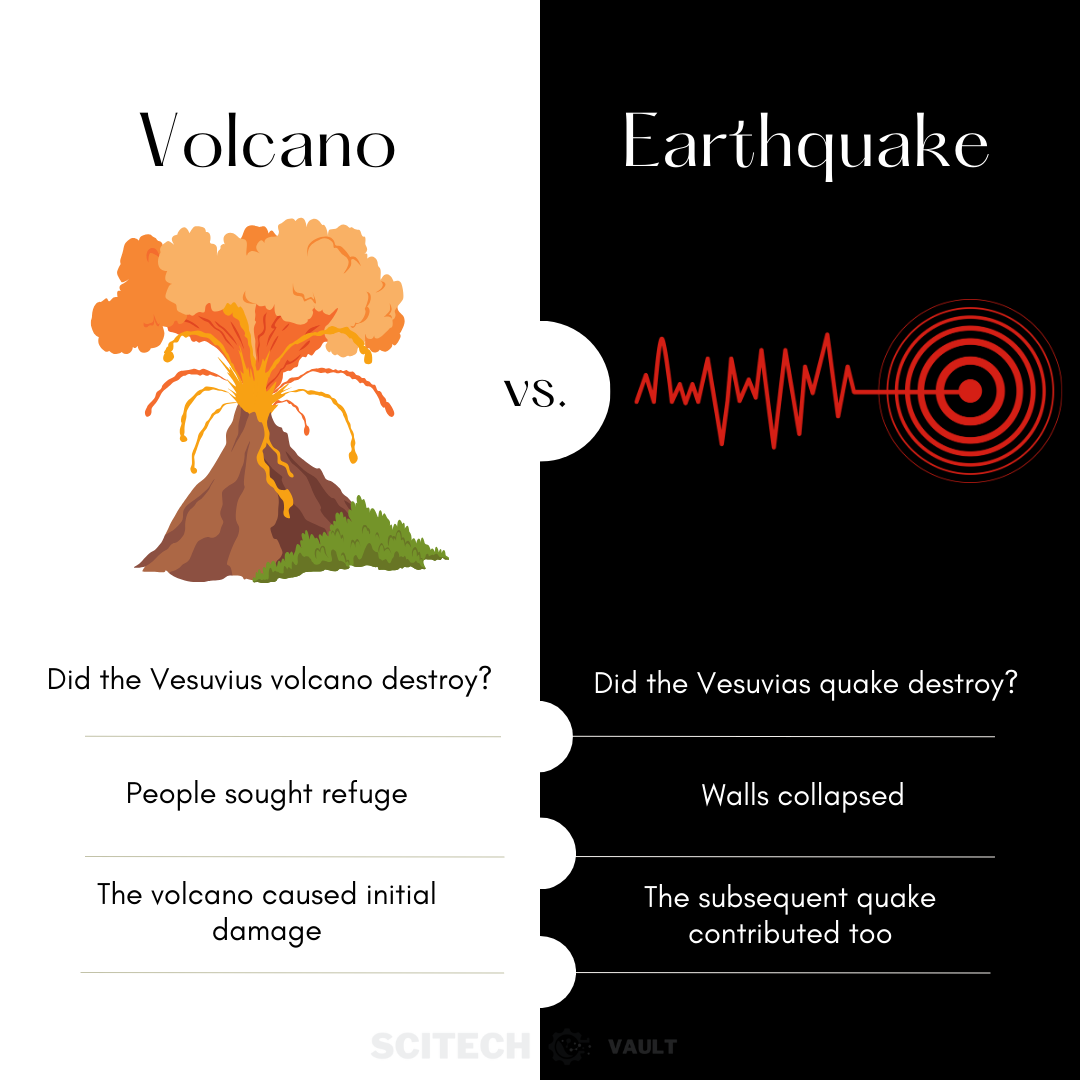Popular
The D. B. Cooper Mystery: New Scientific Approaches
Can you help us solve this epic aviation mystery?

Dan Cooper, also known by the name D. B. Cooper, hijacked a Boeing 727 aircraft exited it using a parachute. With him, was a suitcase containing USD 200,000 (and presumably some dynamite sticks). In this article, we will not discuss what is known already. Instead, we will try to solve the D. B. Cooper mystery using novel and interesting scientific approaches.
On November 24, 1971, Dan Cooper boarded Flight 305 flying from Portland and Seattle. He handed over a note to flight attendant Florence. Florence kept it inside her purse without reading it. Dan Cooper immediately asked her to read it. He also told her that he had a bomb with him. Florence noticed eight red cylinders, electrical wiring, and a battery inside Dan Cooper’s suitcase. Within seconds, Dan demanded USD 200,000 and four parachutes. He also asked Florence to make arrangements for refueling the aircraft at the Seattle airport.
The aircraft landed in Seattle and took off with five people aboard: Dan Cooper, a pilot, a co-pilot, a flight attendant, and a flight engineer. It started flying towards Mexico City. Two fighter planes secretly followed the hijacked aircraft. At around 8 PM, the airline crew noticed a warning indicating that the airstrip apparatus had been activated. Dan Cooper presumably jumped off the aircraft between 8 and 8:30 PM. That’s exactly where all the fun begins, because neither Dan Cooper nor his belongings were ever seen again. The only recovered items include three $20 bundles.
So today, let’s attempt to solve the D. B. Cooper mystery using novel investigative approaches that have never been published before.
Theory no. 1: How Cooper vanished without a trace
The $20 bills recovered from the hijacking near a river bank at Tena Bar included three badly burnt bills. Currency cannot catch fire just like that, which means that Dan accidentally blew himself up when he crash-landed on an old and dried-up tree inside the thick Seattle forest. We must keep in mind that he (presumably) had dynamite sticks with him. Dynamite is extremely sensitive to vibrations. This could also explain why no traces were found even after the FBI thoroughly searched the forest area and its immediate surroundings. Everything simply vaporized in an instant! After the knapsack got damaged in the explosion, three bundles containing $20 bills presumably got thrown into the river. However, this theory fails to explain why ten $20 bills went missing from one of the bundles recovered at a river bank near Tena Bar.
The FBI needs to relaunch the cold case and examine seismic data near the Seattle area between 8:13 and 8:30 PM, when D B. Cooper exited the aircraft. Why? Because if an explosion occurs near a land surface, the seismic data records a zero depth or sometimes even a negative depth (please see the embedded video to learn more about this).
SciTech Vault came across three such explosions showing negative depths, but they all took place miles away from where Dan had presumably landed and also didn’t occur on the same day. So let’s now consider the second possibility.
Theory no. 2: Did he elope to Canada?
This is probably what happened: D. B. Cooper, the aviation expert, landed inside a Seattle forest and quickly walked to a nearby water body. He drowned the parachute, the suitcase containing the real (or fake) dynamite sticks, and whatever else he had with him. He then hitchhiked to the Canadian border and presumably spent USD 200 during the process, which explains why ten $20 bills went missing from one of the recovered Tena Bar cash bundles.
By now, D. B. Cooper had already diverted the FBI’s attention to Mexico, in order to be able to safely escape to Canada from the north side of Seattle, without any issue at the US-Canada border. He purchased valuables (diamonds, gold, etc.) and a machine gun worth $199, 800 after entering Canada, presumably from a local gang member. He then eliminated the gang member with the recently purchased automatic gun (to prevent the recirculation and re-entry of the FBI cash), and then returned to the forest to bury the three cash bundles near a river bank at Tena Bar. This bundle included three fully burnt bills; the idea here was to intentionally misguide the FBI one more time.
Therefore, the FBI now needs to do these three things:
- Hire scuba divers and launch an underwater search in the forest area where D. B. Cooper presumably landed. No such search has presumably been conducted so far; at least we did not come across any reports from professional underwater swimmers.
- Reinvestigate large dealings of valuable items (gold, diamonds, etc.) in the US and Canada around November 24, 1971 and look into gang member homicides that took place in the U.S. and Canada around the same date.
- Check for traces of dynamite on the burnt $20 bills or try to find out how they caught fire if the dynamite was fake.
Would you like to contribute to this investigation? Please share your thoughts with us in the comments section of the video embedded above. On a completely different note, do you enjoy solving murder mysteries using forensic evidence?
Popular
Did the Vesuvius Volcano or Earthquake Destroy Pompeii?
Scientists discover meaningful answers after a long time

Challenge
The 79 CE eruption of Vesuvius, which occurred in the first century of the Common Era, caused extensive destruction in Pompeii. This made it challenging to separate and identify the effects of simultaneous volcanic and seismic activity. Researchers aimed to distinguish the impact of both phenomena to reconstruct the events accurately. However, they were not able to achieve this differentiation until now. In other words, it wasn’t clear whether the initial volcano or the subsequent earthquake caused the massive destruction.
Innovation
A collaborative study by Istituto Nazionale di Geofisica e Vulcanologia (INGV) and Pompeii Archaeological Park was able to address the complexity of these co-occurring events. The study deciphered the destruction of Pompeii and retrospectively analyzed the decisions made by its inhabitants during the catastrophic events.
Implementation
Researchers conducted thorough excavations in Pompeii, focusing on collapsed buildings and skeletal remains. They identified earthquake-induced damage and trauma in two skeletons, revealing how seismic events contributed to the collapse of structures and the fatalities among Pompeiians.
More specifically, the study authors found that the eruption of Vesuvius struck while Pompeiians were engaged in their daily activities. For nearly 18 hours, the city was bombarded with pumice lapilli—small rock and ash particles—which forced many residents to seek refuge.
When the eruption briefly subsided, those who remained in their shelters may have felt secure, only to be later overwhelmed by powerful earthquakes. This suggests that the catastrophic destruction of Pompeii cannot be attributed solely to the initial volcanic activity. Instead, it must also be attributed to the subsequent earthquakes that caused the collapse of already weakened structures.
Outcome
The study revealed that the seismic activity that followed the Vesuvius eruption significantly influenced the destruction of Pompeii. It contributed to the collapse of buildings and the deaths of many residents. These insights provide a clearer picture of the interplay between volcanic and seismic events. The study also helps reconstruct the experiences and choices of those who lived through the eruption.
Reference: http://dx.doi.org/10.3389/feart.2024.1386960
By the way, did you know that a new method is able to predict seizures with high accuracy?
Popular
Satellite ERS-2 to Crash into Earth
Dead European satellite to make an uncontrolled reentry soon

Imagine this situation: It’s a beautiful and sunny Sunday morning. You are vacationing on a cruise ship in the Bahamas. All of a sudden, an odd piece of metal lands on the deck of the ship, narrowly missing your feet. Sounds like a scene from a Hollywood movie, correct? Well, something like this many actually happen this week. Did you know that a dead European satellite is about to crash into Earth sometime soon?
Statistical odds
According to the official announcement made by the European Space Agency, satellite ERS-2 is scheduled for an uncontrolled reentry on February 21, with an error margin of plus or minus one and a half days. Additionally, space experts are not entirely certain about the precise location where the satellite may crash after surviving reentry. However, it is a known fact that such landings mainly happen in the seas or oceans. According to experts from Europe’s premier space agency, the largest fragment that could reach land or a water body could easily weigh more than 50 kg.
Quite interestingly, statistical calculations indicate that the odds of a piece of the defunct satellite landing on someone are one in a billion. For the sake of comparison, the odds of getting struck by lightning in any given year are approximately 1 in 500,000 in the United States. So, one in a billion is clearly much lower than that. The dead satellite weights nearly 2,300 kg and has no fuel left in it.
Historic but unrelated impacts
Speaking of statistical odds, did you know that in the year 1954, a woman who was peacefully sleeping on her couch was hit by a meteorite that weighed roughly 2 kg? Luckily, the woman from Alabama did not die. However, she did suffer injuries inflicted by a rock from outer space.
In the year 1992, a space rock that was more than 4 billion years old struck a parked car in Peekskill, New York. The owner of the car did not repair the dent created by the meteorite. Instead, he sold the car and the meteorite to interested buyers for nearly $75,000.
Two interesting updates
Before I conclude this post, allow me to share some interesting updates. Elon Musk, the world’s wealthiest scientist, investor, and tech innovator, who has a bachelor’s degree in physics and economics, is doing us a huge favor by deorbiting 100 old Starlink satellites. Thank you, Elon! This means a lot to us.
Also, the United States of America has launched missile-detecting satellites into orbit after intelligence agencies revealed that Russia was planning to develop and deploy nuclear-powered anti-satellite weapons to presumably target U.S. space satellites.
By the way, did you know that dinosaurs could be held accountable for facilitating the process of human aging?
Popular
Solar Cycle Peak, Rogue Oceanic Waves, Hazards Below Yellowstone, and More
Interesting scientific and technological advancements from November 2023

Presenting some of the most interesting scientific and technological updates (the solar cycle peak of 2024, monster waves, and more) from November 2023. Make sure you subscribe to SciTech Vault’s YouTube channel.
Solar Cycle Peak in 2024
We all know that the Sun’s magnetic activity fluctuates over a broad range of timescales, spanning from minutes to thousands of years and beyond. Sunspots have always piqued the curiosity of space researchers. By definition, sunspots are dark regions on the solar surface with heightened magnetic activity. Interestingly, sunspots appear, grow, and disappear over time. This cyclical pattern of sunspot activity, also known as the sunspot cycle, repeats approximately every 11 years. Space physicists from the Indian Institutes of Science Education and Research have predicted a peak for the 25th solar cycle in 2024. What does this mean for us? It means that next year, we need to take extra steps to prevent the disruption of satellite operations, radio communications, and power grids. On the positive side, gigantic auroras are very likely to be visible during the peak of the 25th solar cycle. Of course, when I say “25th solar cycle,” I mean that we have only been able to study and record 24 such events so far.
Forecasting Rogue Oceanic Waves
On January 1, 1995, a 26-meter-tall rogue wave caught everyone off guard before slamming into a Norwegian oil platform. Rogue waves, also known as monster or killer waves, are unusually large waves that form in seas and oceans. They exhibit distinctive features such as atypical height, high speed, and steepness, setting them apart from surrounding waves. These extraordinary waves pose a significant threat to ships and offshore structures. They can form and emerge without sufficient warning, even in seemingly calm seas and oceans, possibly due to the constructive interference of smaller waves. However, the precise mechanism governing the formation of rogue waves remains largely unknown. A research team has recently used artificial intelligence to forecast rogue waves by analyzing 700 years’ worth of data, marking a significant advancement in wave prediction technology. This is a major scientific breakthrough, considering the potential damage rogue waves can inflict on ships and oil rigs.
Google’s Weather Forecasts
Speaking of predictions, did you know that Google is taking weather forecasting to the next level with the help of machine learning? Google’s “GraphCast” employs machine learning and trains itself using reanalysis data or weather-related data from the past. Thanks to this approach, GraphCast can predict hundreds of global weather variables covering a 10-day period within 60 seconds. While Google’s GraphCast does have certain technical limitations, it proves to be more efficient in tracking tropical cyclones and extreme temperatures than existing weather prediction models.
Robots Ask Questions
Researchers from Google and Princeton University are employing a new approach to create robots that are smarter than ever before. Imagine this situation: There’s a table with multiple dissimilar toy cars, each painted with a different color. You ask a robot to pick a toy car. In such a scenario, the robot should ideally ask the user a question or a series of questions that will help it choose the correct toy car. Guess what? Engineers are precisely adopting this approach and using large language models to revolutionize the field of robotics. However, trained robots are being programmed to ask a question only when the options meet a certain probability threshold. For instance, the robot does not ask a question when tasked with picking a red apple from a group of red and green apples because there is no uncertainty involved. Meanwhile, let’s wait and see what happens when the Google-trained robot is tasked with picking a girlfriend or boyfriend for a date. Of course, that was a joke.
Mechanism of Phototropism Revealed
We all know that plants do not have eyes. But then, how do they determine the direction of light? Well, plant tissues harbor smart photoreceptors that respond to light, aiding the plant in decision-making. This phenomenon is known as “phototropism.” For instance, whereas plant stems typically exhibit positive phototropism by growing towards the light source, plant roots tend to display the opposite, or negative phototropism, by moving away from the source of light. Although biologists were aware of this phenomenon, the underlying mechanism had remained elusive for years. A team of brilliant scientists has finally decoded the underlying mechanism of phototropism. Long story short, air-filled channels inside plant tissues facilitate the process of phototropism. Quite interesting, isn’t it?
WWII Co-Pilot’s Remains Found
Quite recently, something truly remarkable happened in Sciacca, a town in southern Italy. Nearly 80 years ago, a B-25 bomber had crashed in this town during World War II. A team of investigators, led by forensic researchers from Cranfield University, conducted a careful investigation in Italy. In October 2023, the team performed extensive DNA analysis and announced the discovery of human remains belonging to Gilbert Haldeen Myers, almost eight decades after the airplane crash. Myers was co-piloting the B-25 bomber when it crashed in the Italian town of Sciacca. By the way, did you know that DNA-based forensic investigations have resolved numerous mysteries in the recent past?
Hazards Below Yellowstone
Have you ever been to the Yellowstone National Park located in the U.S. state of Wyoming? You will be surprised to know that there are geological hazards lurking below Yellowstone. Using “LIDAR” or Light Detection and Ranging technology, researchers created detailed maps of the terrain beneath the dense forests and foliage of Yellowstone. By doing this, they gained insights into the prehistoric landslides and earthquakes that tormented this region long time back. By studying these historic geological events, scientists are gaining a better understanding of the current risks faced by the millions of people residing in the vicinity of Yellowstone.
Click here to learn more about SciTech Vault’s Publishing and Patenting Workshop.
Popular
Mass Extinction Driven by Human Activity
Homo sapiens have been interfering with the natural course of evolution for ages

A study published in the Proceedings of the National Academy of Sciences has unveiled a startling revelation: that human activity is driving the mass extinction of entire genera of animals. The authors of the study argue that this human-induced mass extinction is dramatically reshaping the course of evolution. They claim that it is negatively impacting the environmental conditions that are crucial for supporting human life on this planet. The study notes that corrective action is urgently warranted.
How does human activity cause mass extinction?
Homo sapiens have been interfering with the natural course of evolution for ages by exploiting natural habitats for agricultural and commercial use. Such intervention is known to trigger the destruction and fragmentation of thriving ecosystems. The problem gets further compounded because of the overexploitation of natural resources (e.g., the extensive clearing of forests for wood). The combustion of fossil fuels makes it (the sixth mass extinction) even worse.
What is the difference between genus and species?
“Genera” have a higher taxonomic rank than “species.” A genus (plural: genera) basically represents a group of closely related species that share common characteristics and ancestry.
What to expect next?
When a species becomes extinct, another one within the same genus sometimes steps in to carry out some of its original ecological functions. However, when entire genera vanish, it creates a huge void in the ecosystem. Unfortunately, a massive loss in biodiversity can possibly get restored only after millions of years. Therefore, we need to undertake urgent rescue measures before things escalate dramatically.
Quick example: We all know that Lyme disease is spreading rapidly in certain geographic locations because of white-footed mice. These deadly rodents used to compete with passenger pigeons for food. However, mouse populations started booming after the extinction of passenger pigeons. The problem got aggravated further because of a steep decline in the populations of rodent predators such as wolves and cougars.
The study examines the magnitude of this imminent crisis. Click here to learn more about this landmark PNAS study.
If you have adopted any specific measures to mitigate the effects of climate change, then do share them with us in the comments section below.
By the way, did you know that researchers have extensively studied serial killers?
















































